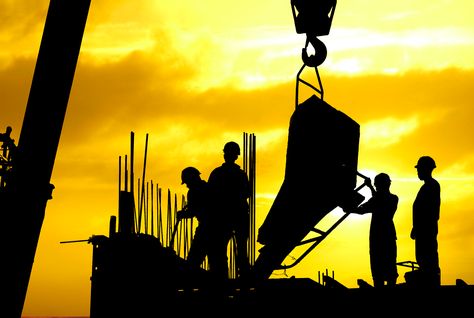Occupational health in the construction industry
The term ‘health’ has evolved over time from referring simply to the body's ability to function, to include physical, mental and social wellbeing.
According to ‘Occupational health risk management in construction. A guide to the key issues of occupational health provision’ published by the Health and Safety Executive (HSE) in November 2015:
| Occupational ill health refers to all health problems in the work environment. The term covers health problems workers bring to the workplace, as well as health issues caused or made worse by work. It covers serious and fatal diseases, physical effects on skin, breathing, hearing, mobility and functioning, and psychological effects on mental wellbeing. Effects may be immediate and visible, but are more often unseen and take a long time to develop, so vigilance and monitoring can be key to identifying problems. Some effects can be cured if diagnosed early; many can only be prevented from getting worse. Of course, some diseases are terminal. |
The guide was published due to a “...widespread misunderstanding of what ‘occupational health’ means in the construction sector and the employers’ misguided perception that health is more difficult to manage than safety”.
It suggests that construction workers are at least 100 times more likely to die from a disease caused or made worse by their work than they are from a fatal accident. It proposes that managing workplace health helps employers to retain experienced and skilled workers, and it helps employees maintain productive employment.
Key occupational health risks include:
- Exposure to asbestos, dusts including silica and lead.
- Chemicals, sunlight, diesel engine exhaust emissions.
- Frequent loud noise.
- Frequent or excessive use of vibrating tools.
- Frequent or excessive manual handling of loads.
- Stress and fatigue.
The guide proposes a risk management cycle that includes:
- Identification of hazards.
- Assessment of risks.
- Selection of controls.
- Implementation and recording of findings.
- Monitoring and review.
Occupational hygiene is the professional discipline of recognising, evaluating and controlling risks to health in the workplace to prevent ill health.
For more information see: http://www.hse.gov.uk/aboutus/meetings/iacs/coniac/coniac-oh-guidance.pdf
[edit] Related articles on Designing Buildings
- Asbestos.
- CDM.
- Changing attitudes towards the mental wellbeing of early career Architectural Technology professionals.
- Construction Industry Advisory Committee.
- Control of Substances Hazardous to Health (COSHH).
- Deleterious materials.
- Dust.
- Environmental health.
- Hand-arm vibration syndrome.
- Health and safety consultant.
- Health and safety executive.
- Health and safety offences, corporate manslaughter and food safety and hygiene offences definitive guideline.
- Health and safety.
- Health.
- Heat stress.
- ISO/PAS 45005 Guidance for working safely during COVID-19.
- Mental health.
- Occupational accident.
- Occupational health risk management in construction. A guide to the key issues of occupational health provision
- Occupational injury.
- Personal protective equipment.
- Reporting accidents and injuries on construction sites.
- Silica.
- Understanding mental health in the built environment.
- Vibration white finger.
- Wellbeing.
- Work at height regulations.
- Working in confined conditions.
Featured articles and news
Homes England supports Greencore Homes
42 new build affordable sustainable homes in Oxfordshire.
Zero carbon social housing: unlocking brownfield potential
Seven ZEDpod strategies for brownfield housing success.
CIOB report; a blueprint for SDGs and the built environment
Pairing the Sustainable Development Goals with projects.
Types, tests, standards and fires relating to external cladding
Brief descriptions with an extensive list of fires for review.
Latest Build UK Building Safety Regime explainer published
Key elements in one short, now updated document.
UKGBC launch the UK Climate Resilience Roadmap
First guidance of its kind on direct climate impacts for the built environment and how it can adapt.
CLC Health, Safety and Wellbeing Strategy 2025
Launched by the Minister for Industry to look at fatalities on site, improving mental health and other issues.
One of the most impressive Victorian architects. Book review.
Common Assessment Standard now with building safety
New CAS update now includes mandatory building safety questions.
RTPI leader to become new CIOB Chief Executive Officer
Dr Victoria Hills MRTPI, FICE to take over after Caroline Gumble’s departure.
Social and affordable housing, a long term plan for delivery
The “Delivering a Decade of Renewal for Social and Affordable Housing” strategy sets out future path.
A change to adoptive architecture
Effects of global weather warming on architectural detailing, material choice and human interaction.
The proposed publicly owned and backed subsidiary of Homes England, to facilitate new homes.
How big is the problem and what can we do to mitigate the effects?
Overheating guidance and tools for building designers
A number of cool guides to help with the heat.
The UK's Modern Industrial Strategy: A 10 year plan
Previous consultation criticism, current key elements and general support with some persisting reservations.
Building Safety Regulator reforms
New roles, new staff and a new fast track service pave the way for a single construction regulator.























